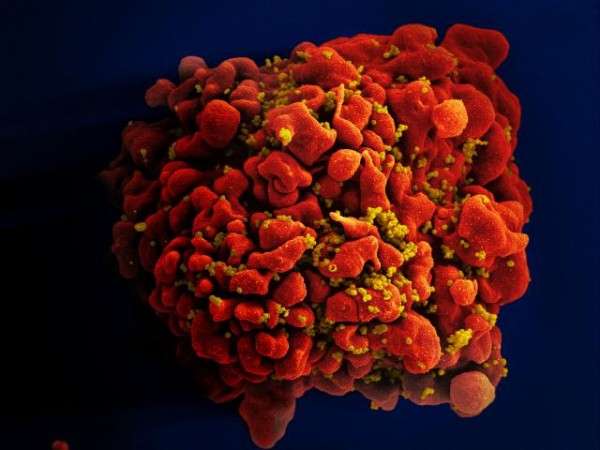Study identifies mechanism for drug target to help block HIV's ability to spread

University of Minnesota researchers have identified the mechanism of a potential HIV drug target, which could be a more cost-effective option than currently used HIV drugs.
The study expanded upon previous UMN research, which identified that the nucleoside 5-azacytidine (5-aza-C) blocked HIV's ability to spread. 5-aza-C triggers lethal mutagenesis, a process in which HIV mutations speed up to a point that the HIV essentially wears itself out.
A collaborative team of researchers at the University of Minnesota and Emory University found that 5-aza-C blocks HIV's ability to spread by first converting to a DNA form (5-aza-deoxyC). The DNA conversion allows 5-aza-C to infiltrate HIV when the virus turns RNA into DNA, and therefore stops the virus from replicating.
The majority of HIV medications currently on the market are DNA-based, but RNA-based drugs like 5-aza-C have a manufacturing advantage because they are more affordable to produce.
The study was posted online and will appear in print in the American Society for Microbiology's journal Antimicrobial Agents and Chemotherapy in April.
"We now understand the mechanism for how 5-aza-C blocks HIV's infectivity through hypermutation. This information may aid in developing cheaper HIV drugs," said lead-author Louis Mansky, Ph.D., Director of the Institute for Molecular Virology and professor in the University of Minnesota School of Dentistry. Mansky is also a Masonic Cancer Center member.
This also helps explain why 5-aza-C is able to block HIV infectivity, despite its RNA-origin. 5-aza-C acts similarly to its DNA-based counterpart 5-aza-deoxyC, but is not nearly as effective. However, it can be mass-produced more cheaply.
"More than half of the world's HIV population is concentrated in sub-Saharan Africa where there is very limited access to HIV drugs and treatment. Our study could lead to developing more cost-effective medication, which in turn could lead to new and more economical treatments for poorer, developing countries," Mansky said.
5-aza-C has been approved by the FDA for clinical use in treating myelodysplastic syndrome, but it's only available as an IV-based medication. The study's findings encourage efforts to explore ways to produce 5-aza-C in capsule form.
"While it's not as effective as its DNA-based form, we can use what we know to try mimicking 5-aza-C to discover new compounds that could be more effective, while still being more affordable to produce," Mansky said.
It's another step towards ultimately finding a cure for HIV, Mansky says.
In addition to being more cost-effective HIV drugs, these RNA-based drugs could have potential use in the treatment of a wide variety of emerging viral infections, including Zika virus, Ebola virus, MERS virus and influenza virus.
More information: Jonathan M.O. Rawson et al. 5-azacytidine enhances the mutagenesis of HIV-1 by reduction to 5-aza-2'-deoxycytidine, Antimicrobial Agents and Chemotherapy (2016). DOI: 10.1128/AAC.03084-15

















